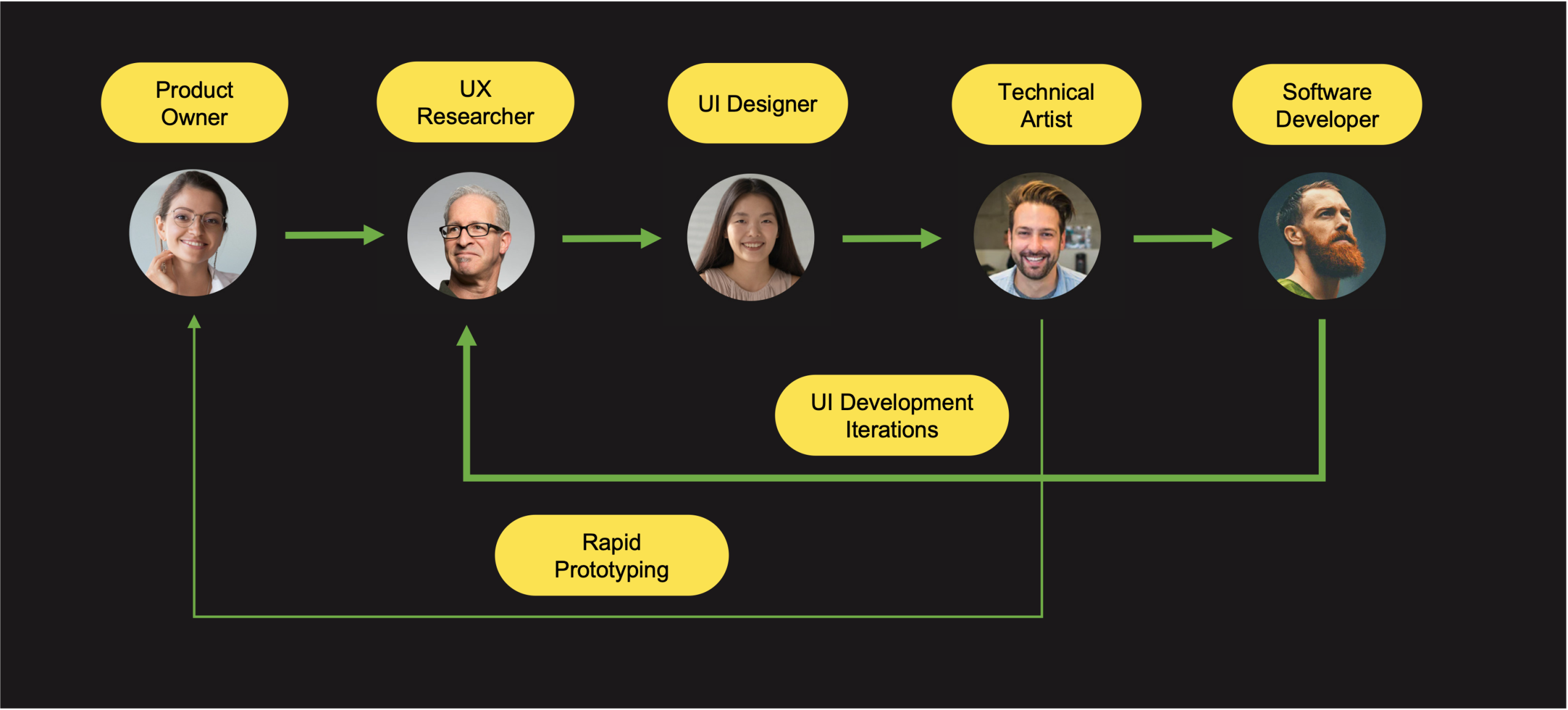
Short answer: A technical artist bridges the gap between artists and programmers—ensuring that art assets look great and run efficiently in the game engine.
Who is NOT a Technical Artist?
- A person who only creates visual assets (that’s an Environment or Character Artist) is not a Technical Artist.
- A person who only writes gameplay code (that’s a Programmer) is not a Technical Artist.
- A person who only defines artistic vision (that’s an Art Director) is not a Technical Artist.
- A person who only optimizes performance in code (that’s an Engine Programmer) is not a Technical Artist.
What does a Technical Artist do?
- Shader creation: design custom materials and visual effects with nodes or code.
- Pipeline tools: develop scripts to speed up asset integration.
- Optimization: reduce polycounts, manage LODs, texture streaming, performance profiling.
- Rigging & skinning support: help animators with technical setups.
- Engine integration: ensure assets work properly in Unreal, Unity, or proprietary engines.
- Collaboration: act as translator between art and programming teams.
Why it matters
Technical artists keep games both beautiful and performant. Without them, art might look great in software but fail inside the engine due to performance or compatibility issues.
Common misconceptions
- “Technical artists just fix bugs.” → They create tools and workflows to prevent problems.
- “It’s only about shaders.” → Their role spans optimization, pipelines, and support for all art departments.
- “They aren’t creative.” → They often invent unique visual solutions combining tech + art.
Core skills & tools
- Engines: Unreal Engine (Blueprints, Material Editor), Unity (Shader Graph, SRP).
- Software: Maya, Blender, Substance, Houdini.
- Scripting: Python, C#, MEL, HLSL/GLSL.
- Knowledge: rendering pipelines, asset optimization, shader math.
- Problem-solving mindset.
Practical frameworks
- Profiling workflow: Identify → Optimize → Test → Document.
- Shader pipeline: Prototype → Iterate → Optimize → Implement.
- LOD system: create scalable assets for different performance levels.
- Tool development: automate repetitive art tasks.
Portfolio tips
- Show before/after optimizations (fps improvements).
- Include custom shaders and materials with breakdowns.
- Present pipeline tools (scripts/plugins you developed).
- Demonstrate cross-team solutions (art + code).
Quick example
Think Fortnite: stylized shaders optimized for large-scale battle royale.
Or Horizon Zero Dawn: advanced material systems and LODs enabling massive open worlds.
Author: Pouria Mojdeh
References:
- Jason Busby – Mastering Unreal Technology: The Art of Level Design (Sams, 2009)
- Eric Lengyel – Foundations of Game Engine Development: Rendering (Terathon Software, 2016)
- Andrew Glassner – Principles of Digital Image Synthesis (Morgan Kaufmann, 1995)
- Jesse Schell – The Art of Game Design: A Book of Lenses (CRC Press, 2019)
- Game Developer (formerly Gamasutra) – www.gamedeveloper.com
